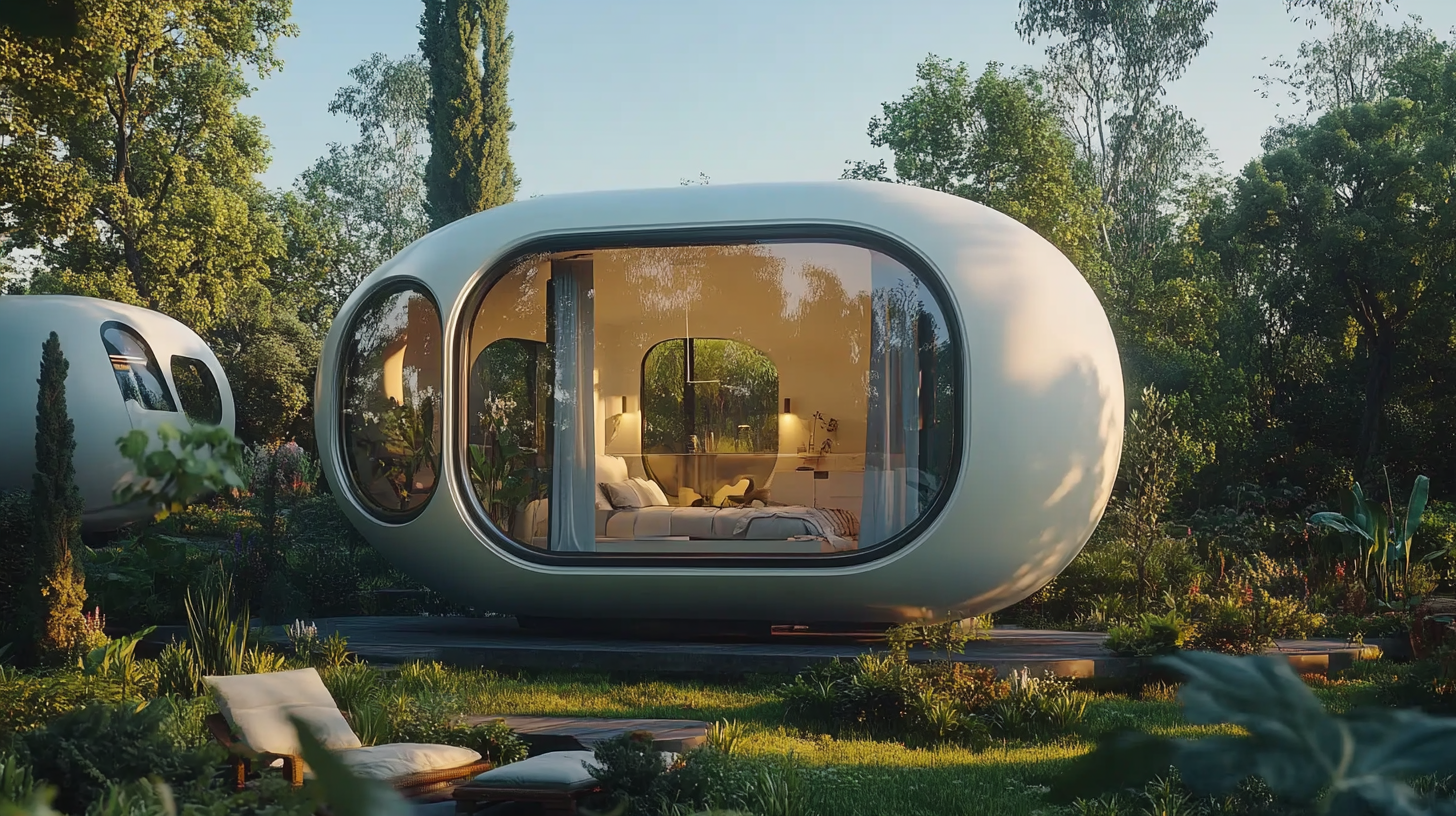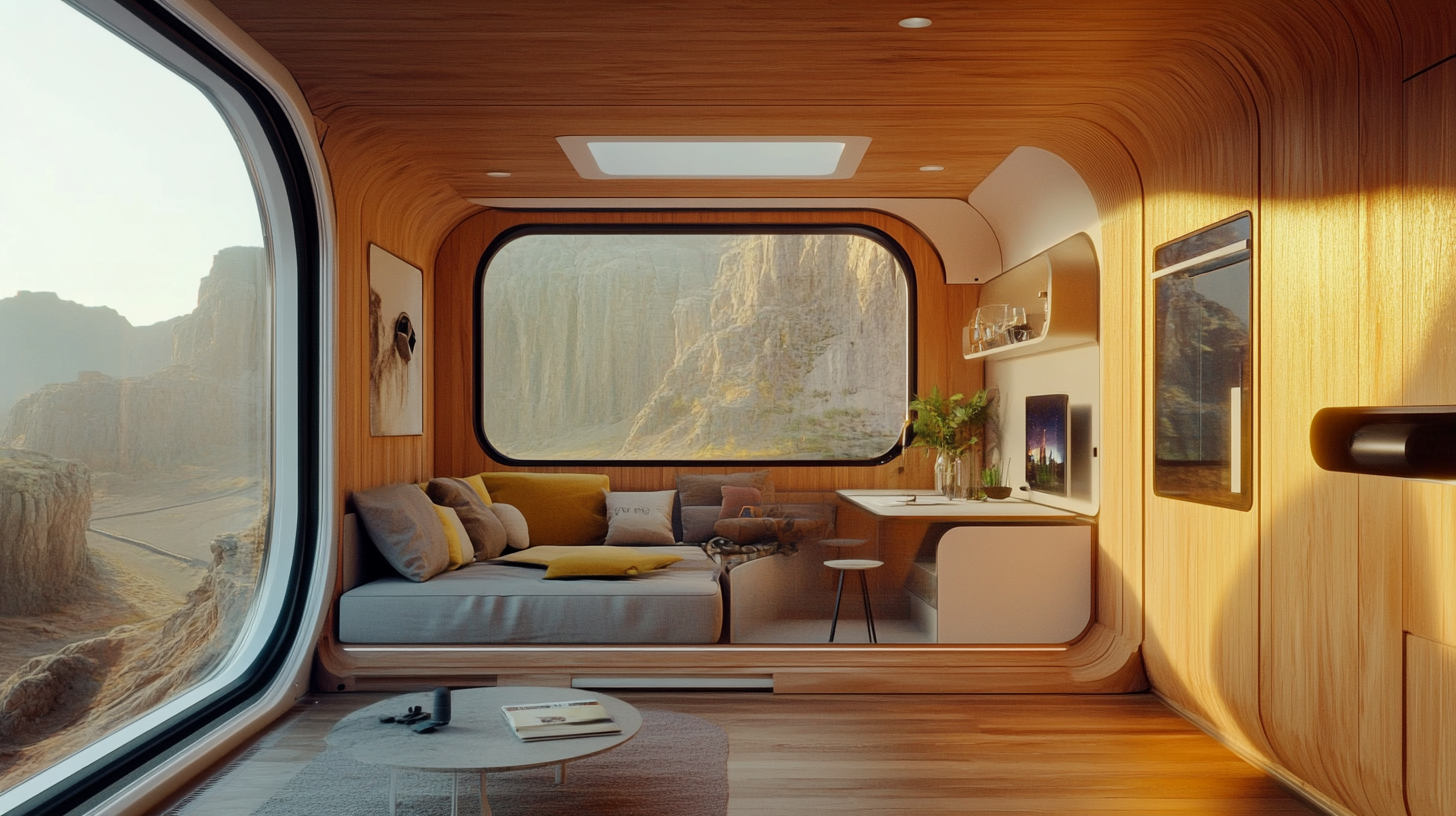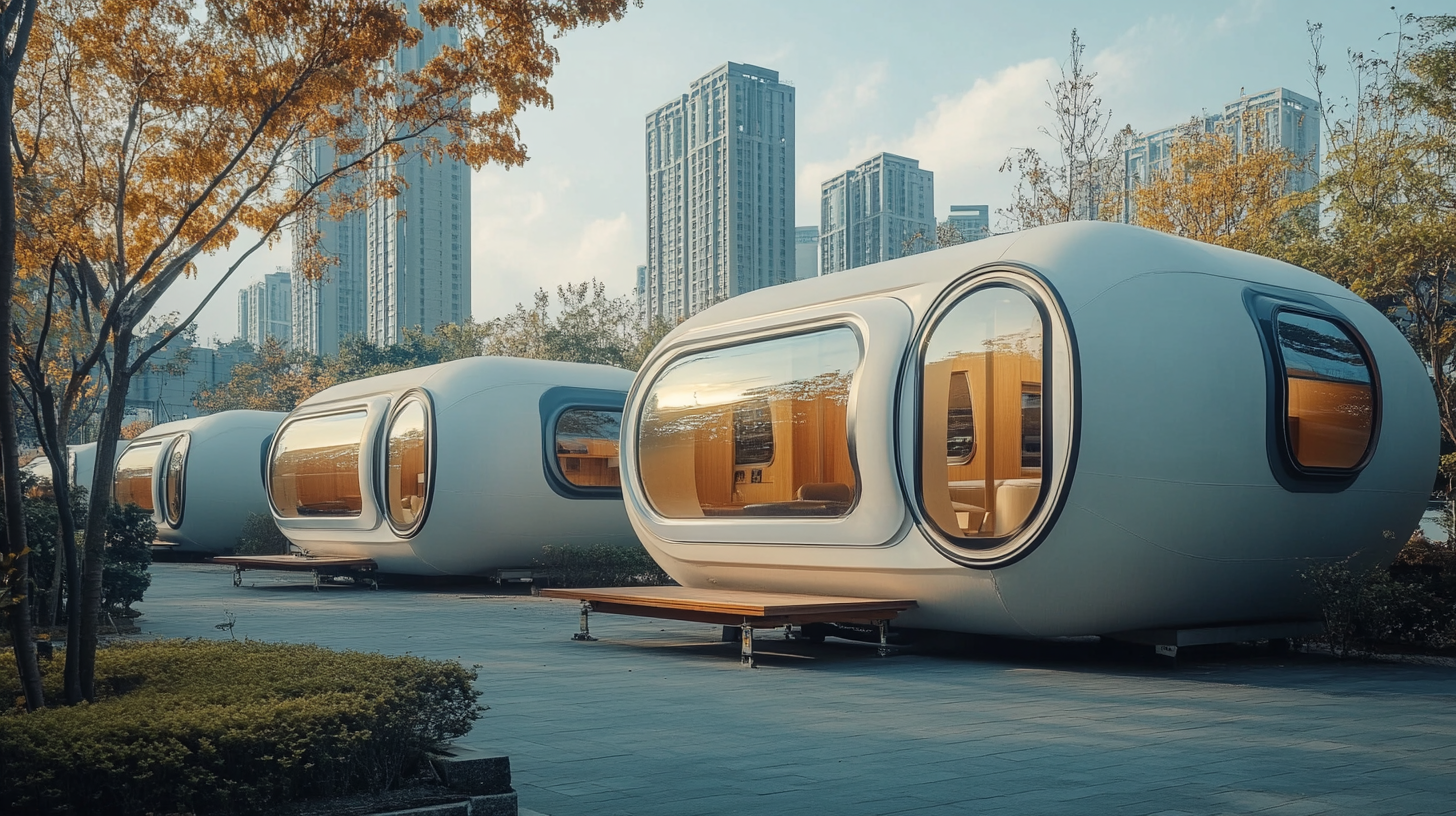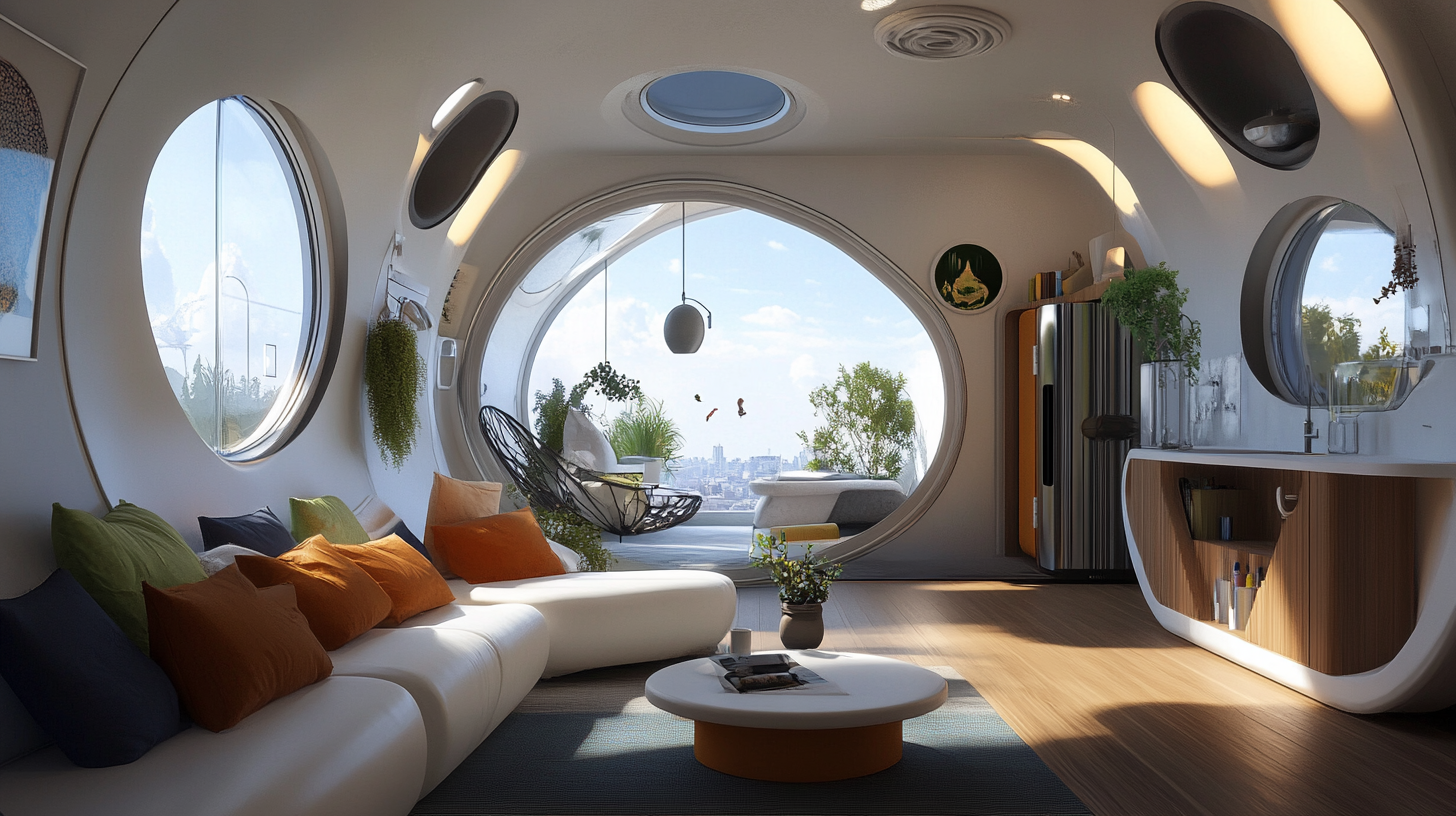
News
Exploring the Unique Specifications of Innovative Capsule Homes for Global Buyers
As urbanization continues to surge globally, the demand for affordable and efficient housing solutions has never been more critical. According to a recent report by Grand View Research, the global tiny homes market is expected to reach $3.6 billion by 2025, driven largely by a shift in consumer preferences towards minimalistic living and eco-friendly designs. Within this growing sector, Capsule Homes have emerged as a prominently innovative solution, offering streamlined design and functionality tailored for modern urban dwellers. These compact living spaces not only cater to affordability but also provide an environmentally sustainable alternative to traditional housing.
The unique specifications of Capsule Homes make them particularly appealing to global buyers navigating the complexities of city living. A survey from IBISWorld indicates that over 60% of Millennials express interest in purchasing smaller homes due to rising housing costs and a desire for a simpler lifestyle. With options ranging from modular designs to multifunctional furniture, Capsule Homes maximize limited space while maintaining comfort and style. This blog will delve into the distinctive features, market trends, and buyer preferences that highlight the growing popularity of Capsule Homes in contemporary architecture and real estate.

Innovative Capsule Homes: An Overview of Design Trends and Features
The rise of capsule homes has captured the attention of global buyers looking for innovative and efficient living solutions. These compact dwellings are designed to maximize space while minimizing environmental impact, and their unique specifications cater to the needs of diverse urban populations. According to a report by the International Federation of Housing and Planning, the average size of new homes has decreased significantly over the past decade, with many buyers opting for more sustainable and space-efficient alternatives, leading to a boom in capsule home designs. One notable design trend is the integration of multifunctional spaces that adapt to the changing needs of residents. Designers are focusing on creating clever storage solutions and convertible furniture, allowing these small homes to serve multiple purposes. A study by the American Institute of Architects indicates that nearly 60% of architects incorporate flexible design elements in small residential projects, demonstrating a growing recognition of the need for versatile living environments. Features like modular systems and expandable layouts have become essential, making capsule homes not only livable but also desirable. Moreover, sustainability plays a pivotal role in the design of innovative capsule homes. Many manufacturers are adopting eco-friendly materials and energy-efficient technologies to meet the increasing demand from environmentally conscious buyers. Research from the Global Green Building Council reveals that green buildings can reduce energy consumption by up to 30%, making these capsule homes a viable option for future urban living. With smart home technology increasingly integrated into their designs, these homes offer extensive control over energy use, enhancing the overall appeal for modern consumers.

The Sustainability Factor: How Capsule Homes Reduce Environmental Impact
As the world grapples with climate change and resource depletion, innovative housing solutions such as capsule homes are emerging as a sustainable alternative. These compact dwellings not only challenge traditional architectural paradigms but also significantly reduce environmental impact. Capsule homes, characterized by their efficient use of space and materials, offer an eco-friendly option for modern living while appealing to a growing market of environmentally conscious buyers.
The sustainability factor of capsule homes lies in their design and construction. Built with lightweight, energy-efficient materials, they minimize energy consumption during both construction and everyday use. Many capsule homes incorporate renewable energy sources—like solar panels—that further reduce reliance on fossil fuels. Additionally, their compact nature means less land is required, preserving green spaces and reducing urban sprawl. As a result, these homes contribute to a smaller carbon footprint, making them an attractive choice for individuals looking to live more sustainably.
Moreover, capsule homes often feature innovative waste management systems, including composting toilets and greywater recycling. This not only promotes efficient resource usage but also fosters a lifestyle that encourages minimal waste production. The integration of smart technology in these homes allows for optimized energy management, enabling occupants to monitor and control their consumption in real-time. Overall, the unique specifications of capsule homes position them as not just a housing trend, but as a vital step towards a more sustainable and eco-conscious future.

Cost Analysis: Comparing Capsule Home Pricing to Traditional Housing
As global housing demand escalates, capsule homes are emerging as a compelling alternative. A recent report by the International Housing Institute indicates that the average cost of traditional single-family homes has soared to approximately $350,000 in major urban areas, making homeownership elusive for many. In contrast, capsule homes offer a budget-friendly solution, with prices ranging from $20,000 to $50,000 depending on location and amenities. This significant price difference makes capsule homes an attractive option for first-time buyers, millennials, and eco-conscious consumers seeking sustainability without the hefty price tag.
The affordability of capsule homes is further complemented by their efficiency in space utilization. The same report highlights that these innovative structures, typically measuring around 100 to 400 square feet, provide a minimalist lifestyle that aligns with the growing trend of downsizing. Many capsule home models incorporate smart technology and sustainable materials, resulting in lower utility costs and a reduced carbon footprint. As urban areas become increasingly congested, the capsule home concept promotes a unique solution to address the growing housing crisis while appealing to the modern buyer's desire for mobility and flexibility.
In addition to their lower upfront costs, capsule homes also present appealing options for investors. With the rise of the short-term rental market, the potential return on investment (ROI) for capsule homes can be quite notable. Industry data reveals that rentals of these compact living spaces can generate upwards of $100 per night in urban locales, leading to an ROI of over 10% annually. As cities evolve, the capsule home phenomenon is reshaping our understanding of affordable housing and investment opportunities, paving the way for innovative living solutions on a global scale.

Global Market Demographics: Who is Investing in Capsule Homes?
As the trend of sustainable and compact living grows, capsule homes have captured the attention of a diverse group of global buyers. The appeal of these innovative dwellings lies not only in their unique design but also in their affordability and ecological footprint. Understanding who is investing in capsule homes reveals a fascinating cross-section of market demographics ranging from young urban professionals to eco-conscious retirees.
Among the primary investors are millennials and Gen Z individuals who prioritize minimalism and sustainability. These younger generations are increasingly drawn to capsule homes as a solution to rising housing costs in urban centers. They value efficiency and smart design, seeking residences that reflect their lifestyle choices. The mobility and affordability offered by capsule homes fulfill their desire for flexibility and adventure, making them an attractive investment.
On the other hand, retirees looking to downsize are also showing interest in this market. With many seeking to reduce their living expenses and maintain a simpler lifestyle, capsule homes represent a practical option. Their compact size allows for easier maintenance and lower utility costs, aligning perfectly with the financial goals of many older adults. This demographic is also inclined towards sustainable living, making capsule homes a fitting choice for those looking to transition to a more eco-friendly way of life.
In addition, investors from various corners of the globe, particularly in countries experiencing rapid urbanization, are recognizing the potential of capsule homes. Whether for rental opportunities or personal use, these homes offer a solution to the housing crisis hitting major cities worldwide. As the market continues to evolve, the diverse buyer demographics underline the growing appeal of capsule homes, making them not just a trend, but a significant movement towards innovative living solutions.
Technological Advancements: Smart Features in Modern Capsule Living Spaces
As urbanization accelerates, innovative capsule homes are gaining traction among global buyers, particularly due to their smart features and technological advancements. Recent studies indicate that the global smart home market is projected to reach $174 billion by 2025, with a significant portion attributed to compact living solutions. These homes are not just minimalist spaces; they are equipped with cutting-edge technology designed to enhance comfort, efficiency, and security.
One of the standout features of modern capsule living spaces is the integration of Internet of Things (IoT) devices. For instance, smart thermostats, lighting systems, and security cameras can be controlled remotely, allowing residents to optimize their environment from their smartphones. According to a report by Statista, approximately 70% of smart home devices are designed for convenience, significantly improving the quality of life for those living in smaller quarters where space optimization is crucial. This technology not only simplifies daily activities but also contributes to energy savings—a critical factor for environmental sustainability.
Moreover, advancements in modular construction technologies have enabled manufacturers to incorporate smart home systems seamlessly into compact designs. Data from Research and Markets suggest that the modular construction market will grow at a CAGR of 6.3% through 2028. This trend signifies an increasing demand for high-tech, prefabricated housing solutions that cater to a growing population of young, tech-savvy professionals and digital nomads seeking efficient living arrangements in urban environments. As innovations continue to transform the housing landscape, capsule homes equipped with smart features stand at the forefront of this movement, promising a forward-thinking approach to modern living.
